Leaving the native WordPress interface? Never. Drowning you in a slew of widgets? He wouldn’t dream of it. With this guy, blocks are the guiding light. Create your next WordPress site without leaving the default editor (Gutenberg), without coding, and…
Dozens and dozens of widgets. Hundreds and hundreds of templates. Options galore. If you use the Elementor page builder, you know that it’s hard to fault its lack of features.
But if you’re the kind of person who always goes back for seconds, you might want more. The Dynamic.ooo – Dynamic Content for Elementor plugin offers to satisfy your appetite.

This plugin has more than 140 additional features on the menu to make Elementor evolve and to help you design even more advanced layouts.
But is this copious plugin worth its weight in gold? What are its specificities? Is it adapted to your needs and your daily practice? This is what you will find out in this detailed test.
Overview
What is Dynamic.ooo?
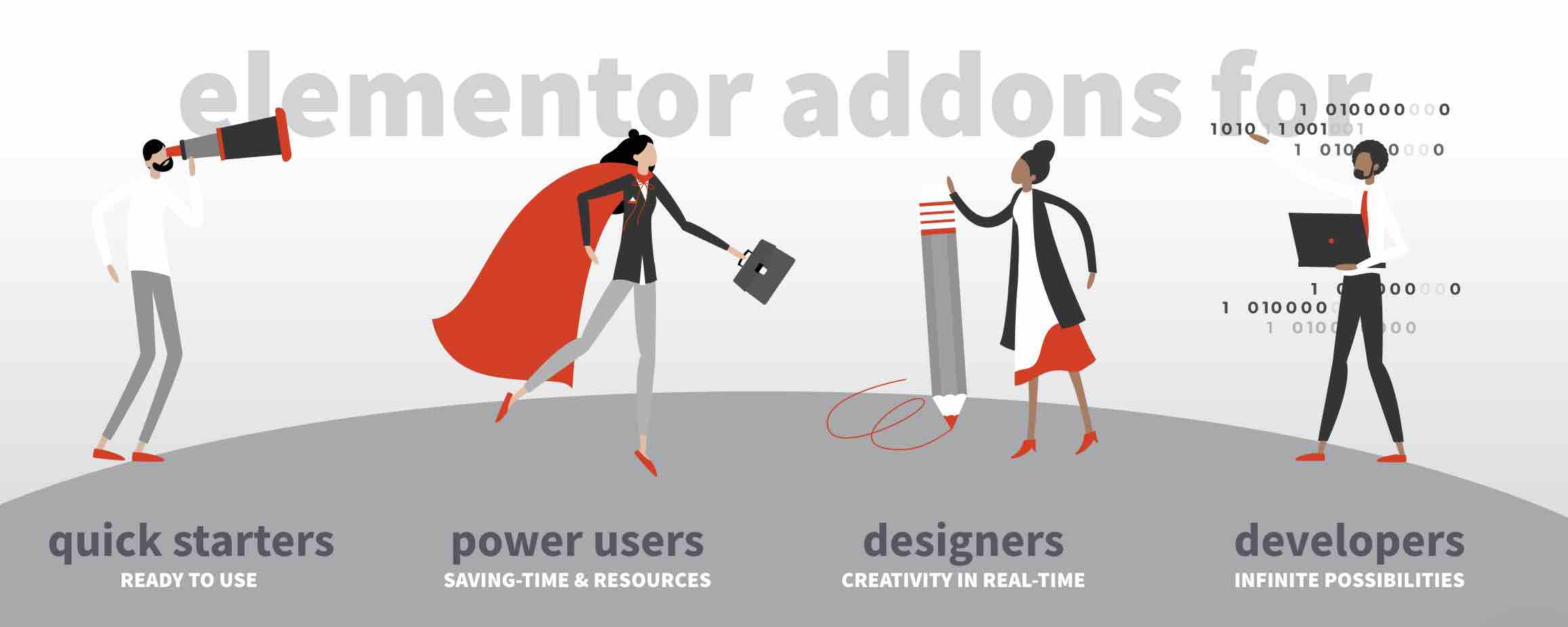
Dynamic.ooo is a paid WordPress plugin that adds more than a hundred features to the Elementor page builder (both free and Pro versions).
You can use this plugin without having to touch any code. It gives you wider customization options in terms of design and especially in adding dynamic content (information that changes from one publication to another).
Beyond Elementor, with which it has been designed to work hand in hand, Dynamic.ooo – Dynamic Content for Elementor (the full name of the plugin) offers integration with the following plugins:
- Advanced Custom Fields (including ACF Pro)
- JetEngine (Crocoblock)
- Meta Box
- WooCommerce
- WPML
- Search and Filter Pro
- Pods
- Toolset
- Timber
Dynamic.ooo was launched in 2018 by an Italian company, which continues to enrich and maintain it. Its developers consider it a “complementary” tool to Elementor, not a competitor.
Initially, their goal with this plugin was to “develop features that could fill the gaps of the free version and coexist with it,” as stated on the plugin’s About page.
To learn a bit more about the content of this add-on for Elementor, read the detailed overview of its dashboard in the following section.
How is the dashboard organized?
In order to start enjoying the features of Dynamic Content for Elementor, purchase it from its official website.
Then, download its zip file on your administration interface, as with any normal plugin. To do so, go to Plugins > Add New > Upload Plugin.
Finally, remember to activate the Dynamic.ooo – Dynamic Content for Elementor plugin. You will then have a new settings menu in the left sidebar of your WordPress administration, logically labeled Dynamic.ooo:
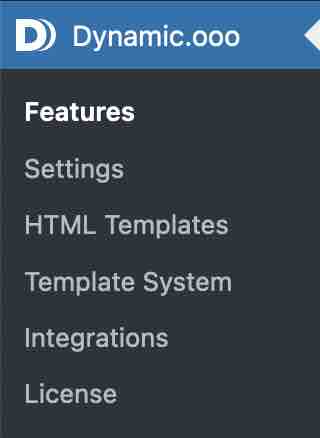
What are the features of Dynamic.ooo – Dynamic Content for Elementor?
One of the most important submenus is called “Features.” It has seven tabs, which list the features according to their type.
At the time of writing, there were:
- 84 widgets for Elementor
- 48 modules (called extensions by Dynamic.ooo)
- 10 dynamic tags
By default, all features are enabled. A small green dot indicates this. You can deactivate the features you don’t want to use — this is a good practice to avoid a long loading time of your pages — by clicking on the one you want:
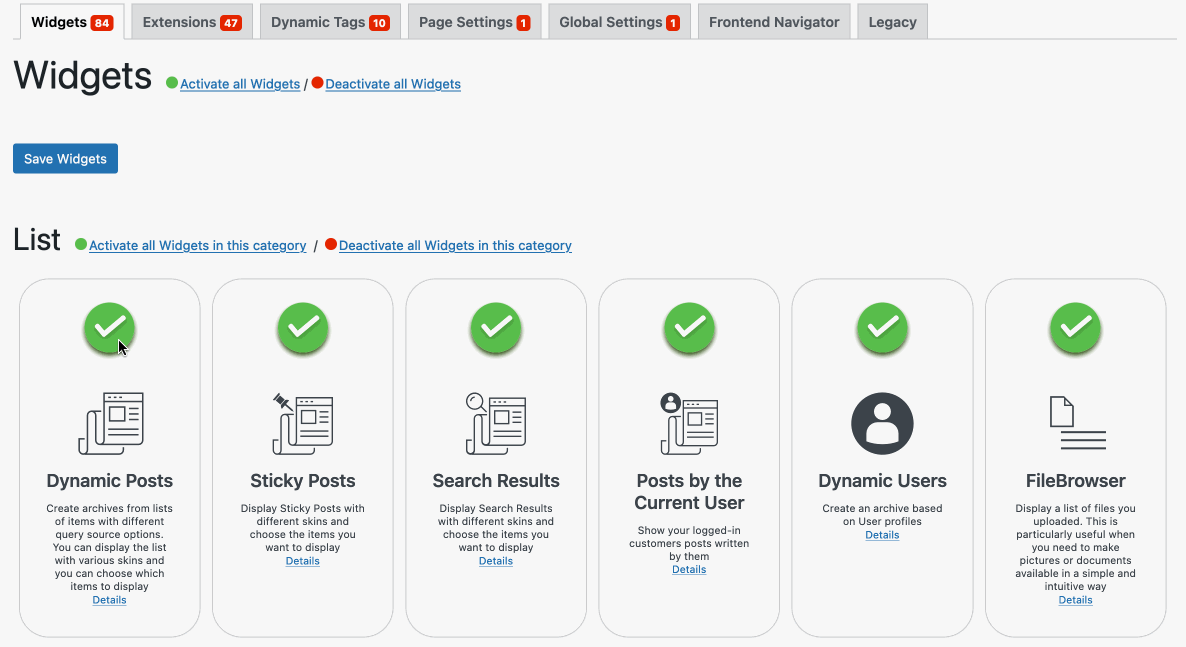
As soon as you make a change, remember to click on the “Save widgets,” “Save Extensions,” or “Save Dynamic Tags” button to save your changes.
As you navigate through the “Widgets” and “Extensions” tabs, you will notice that they classify the proposed functionalities by category.
For example, in the “Widgets” tab, you will find widgets related to creativity (animated text, mouse cursor, parallax effect, 360-degree rotation of an image, etc.), content (dynamic graphic, modal window, add to calendar, etc.), or listing (dynamic articles, dynamic users, list of taxonomy terms, etc.).
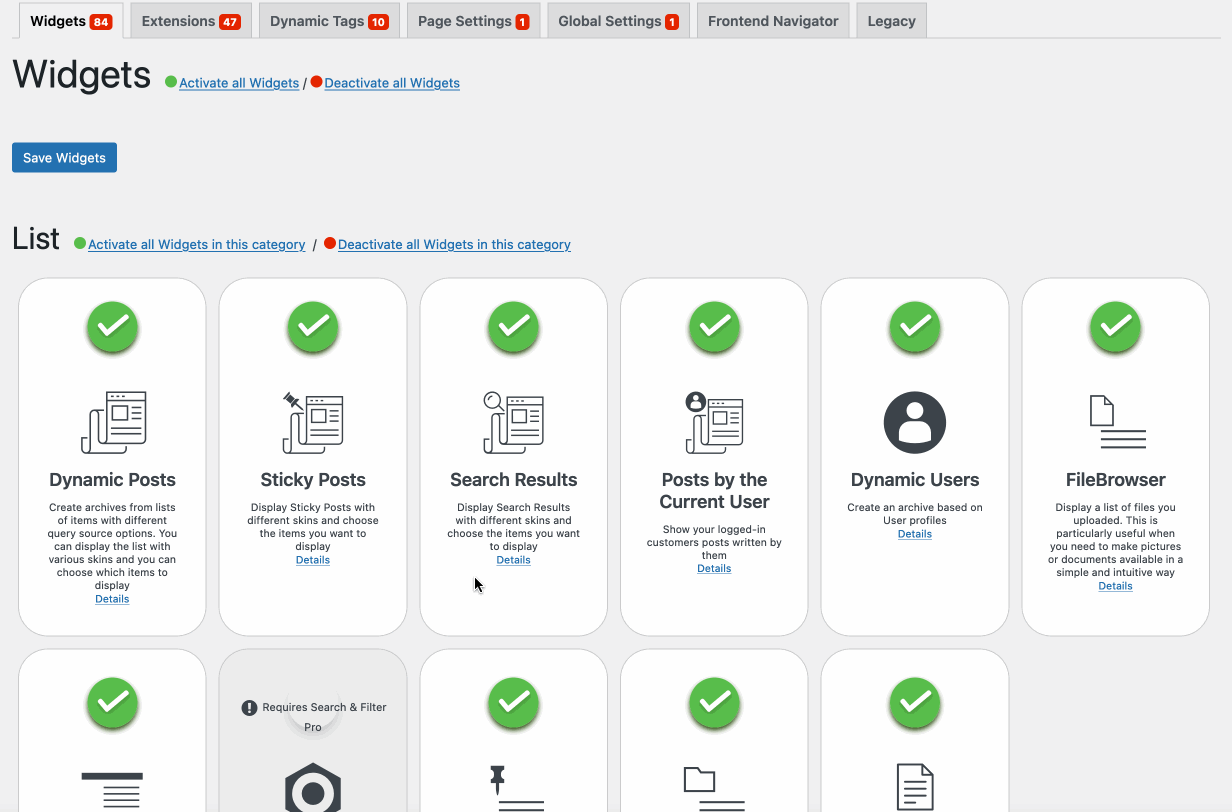
All the features you activate are then available for use in the Elementor editor:
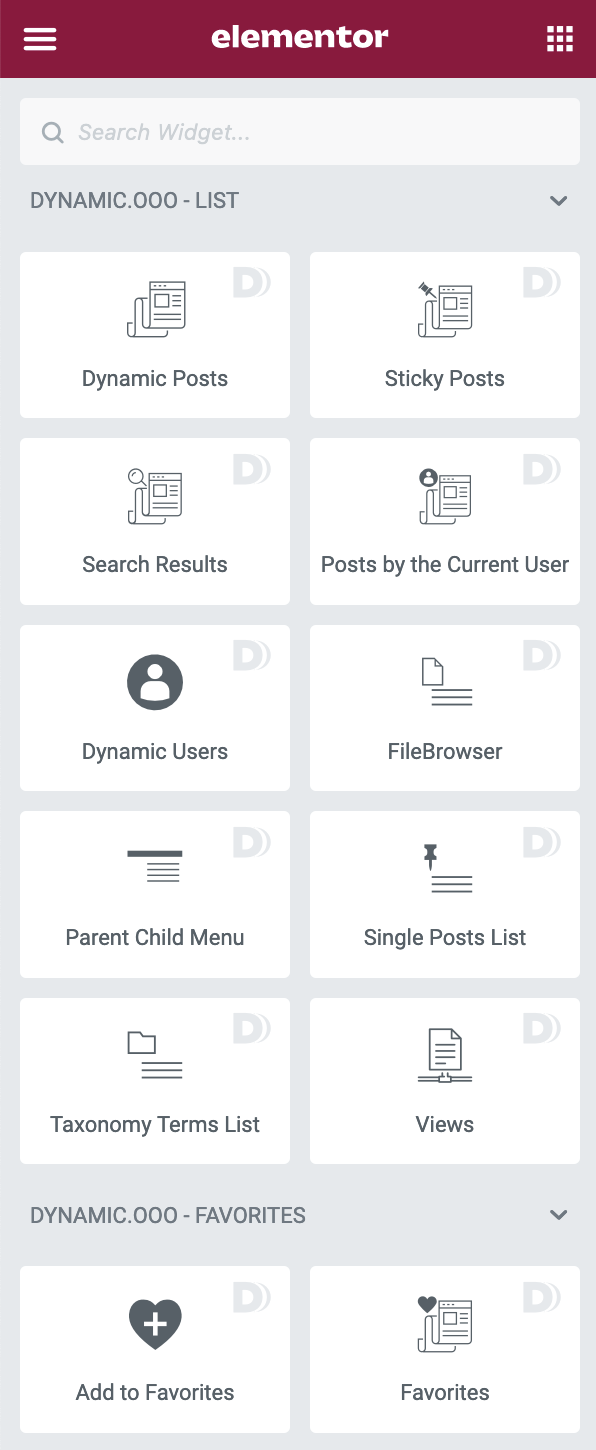
The other settings options
Beyond the “Features” menu , you will also find the following options:
- “Settings” allows you to activate/deactivate what Dynamic Content for Elementor calls tokens. “A token is a specially formatted text fragment that serves as a substitute for a dynamically generated value,” Dynamic.ooo says. It comes in the form of a shortcode. Its use, although very interesting, is mainly reserved for technical users.
- “HTML Templates” allows you to create an HTML template (use of the Timber plugin is required).
- “Template System” is useful for organizing the layout of your templates.
- “Integrations” is used to add the activation keys of several third party services, if you wish to use them (Google Maps, PayPal, Stripe, or CoinMarketApp).
- “License” allows you to add a license key to benefit from updates and new features.
Now you know what Dynamic.ooo – Dynamic Content for Elementor offers. It’s time to get down to business.
As it’s impossible to present all the features of the plugin to you one by one (there are more than 140 addons!), we will focus on a few of them that we think are worthy of interest.
How to use Dynamic.ooo – Dynamic Content for Elementor
Dynamic Visibility
Among the major advantages of Dynamic.ooo – Dynamic Content for Elementor are the very advanced display conditions it offers, thanks to its Dynamic Visibility feature.
When enabled, you can hide widgets, columns, sections, containers, or the entire content of a page on the front-end (the aspect of your site visible to your visitors).
This may not sound terribly exciting to you, since there are already dozens of plugins that allow you to do this — Elementor Pro (affiliate link) is one of them. You’re right.
However, you can go much further with Dynamic Content For Elementor. For example, you can show/hide certain elements according to triggers as varied as:
- Date and time
- The type of device and the browser used
- Geolocation
- User role
- Content type
- URL of the page
- Language
- Etc.
To go further, you can even display dynamic tags and enter your own display conditions with PHP code! You can find all these options in the “Visibility” tab on the Elementor editor:
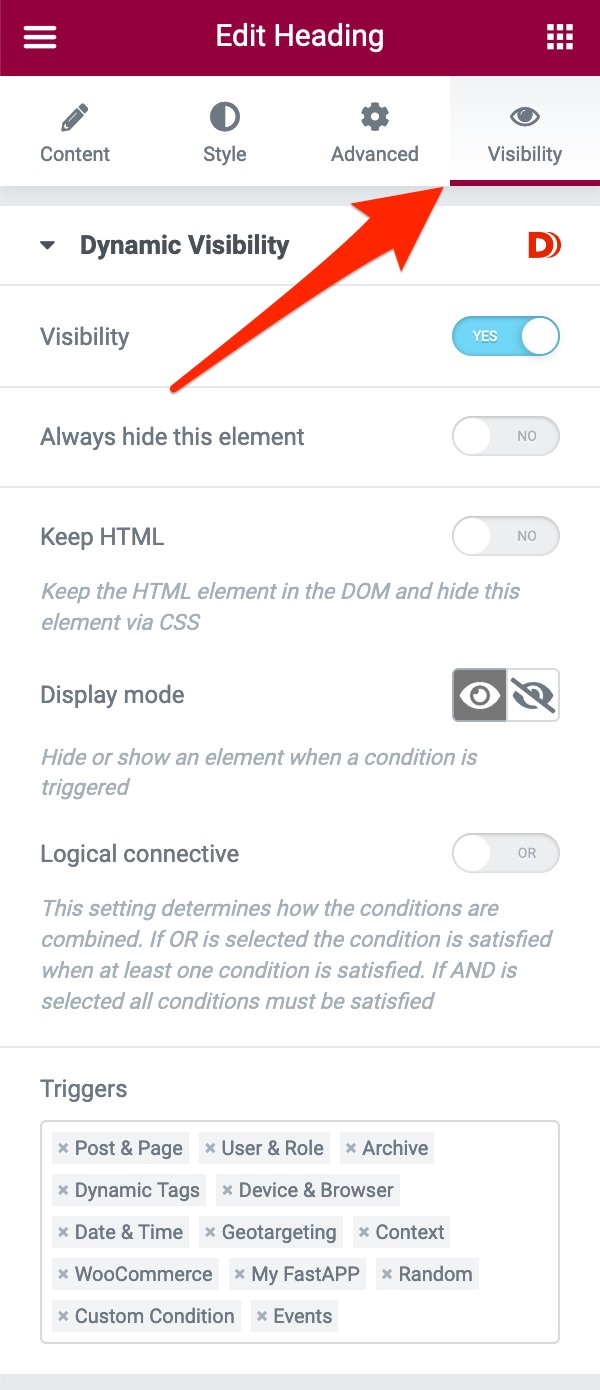
The “Dynamic Visibility” feature can be used in a variety of situations. For example, you can use it when creating a new section on your site, before publishing it.
Dynamic Visibility for Elementor is also available in a free version on the official WordPress directory. However, it does not allow you to create custom display conditions and cannot be used on pop-up windows designed with Elementor.
Dynamic Posts
Are you used to writing blog posts on your WordPress site? Then you’ll probably like the Dynamic Posts widget.
It allows you to create archives from lists of posts based on different types of queries (content type, dynamic, ACF relationship, search page, etc.).
You can then display the list of your articles using several types of layouts (grid, accordion, 3D, carousel, list, table, timeline, etc.):
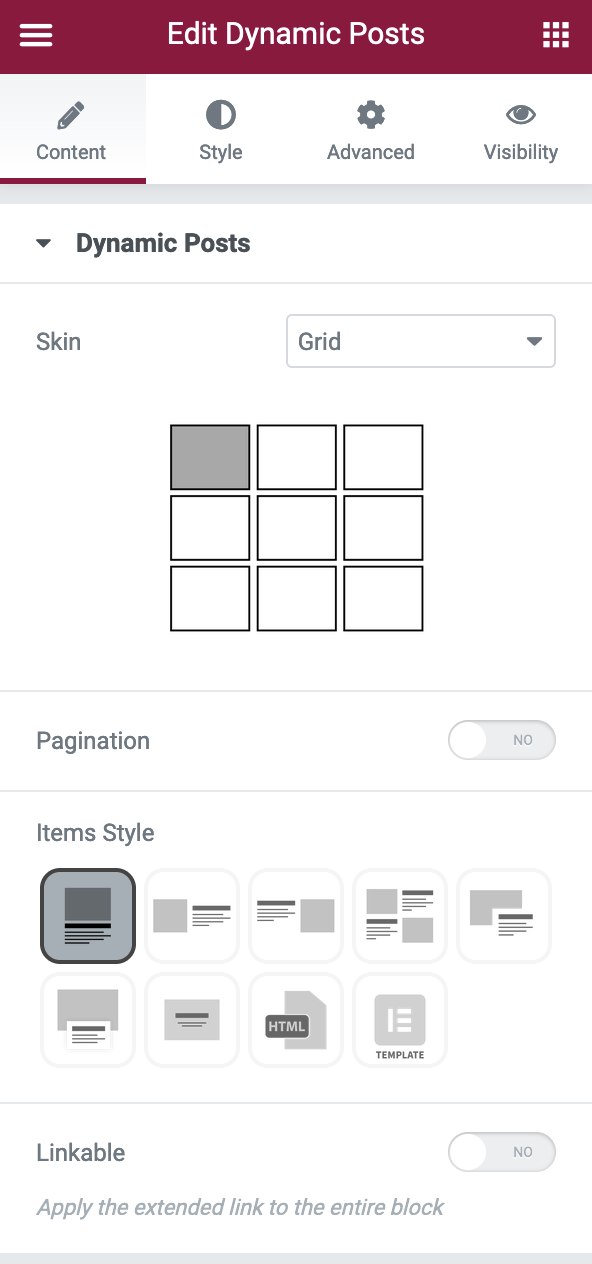
If you have a WooCommerce store, the logic is the same for the “Dynamic Products” widget. You can use this widget to design archives from a list of your products, and present them according to the layout of your choice (eg: grid, carousel, etc.). The display of your list can be triggered by date, product price, author, title, product image, etc.
Dynamic Content for Elementor also has widgets to offer upsell products (products that are more expensive than the ones your customer is interested in) and cross-sell products (to make cross-selling).
Modules dedicated to the Elementor Pro form widget
Among the many modules offered by Dynamic.ooo – Dynamic Content for Elementor, there is a large panel dedicated to the Elementor Pro form widget.
In total, there are 38 modules with various functionalities. For example, you can:
- Generate a PDF from your form
- Specify a minimum/maximum number of characters for your fields
- Add a field to include a handwritten signature (made with the user’s mouse)
- Include a Stripe or PayPal field to facilitate online payment via either of these two providers, directly within your form
In addition, you can also show/hide a field based on the content entered by the user in the previous fields (with the “Conditional Fields for Elementor Pro Form” feature):
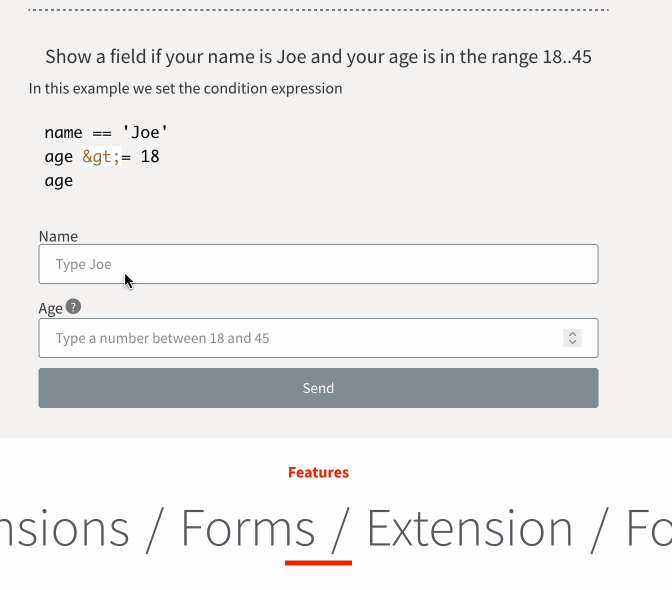
Not to mention the ability to display a list of options that dynamically changes based on the field chosen or filled in by the user just before.
Advanced Custom Fields widgets
Let’s continue by looking at the Advanced Custom Fields (ACF) integration of Dynamic Content for Elementor.
As a reminder, ACF is a very powerful plugin that allows you to add custom fields to your site’s content types (among others).
The important thing to note is that Dynamic.ooo allows you to do a lot with all your ACF fields, which Elementor Pro does not. Dynamic Content for Elementor offers several widgets dedicated to ACF:
- “ACF Fields,” to add your custom ACF fields
- “ACF Repeater,” to integrate repeater fields (including nested ones) designed with ACF, while controlling their layout with an Elementor template, if needed
- “ACF Flexible Content,” to insert flexible ACF fields
- “ACF Relationship,” to add relational fields
- “ACF Gallery” to display a list of elements generated by an ACF gallery field
- “ACF Slider” to design a slider containing elements from an ACF gallery field
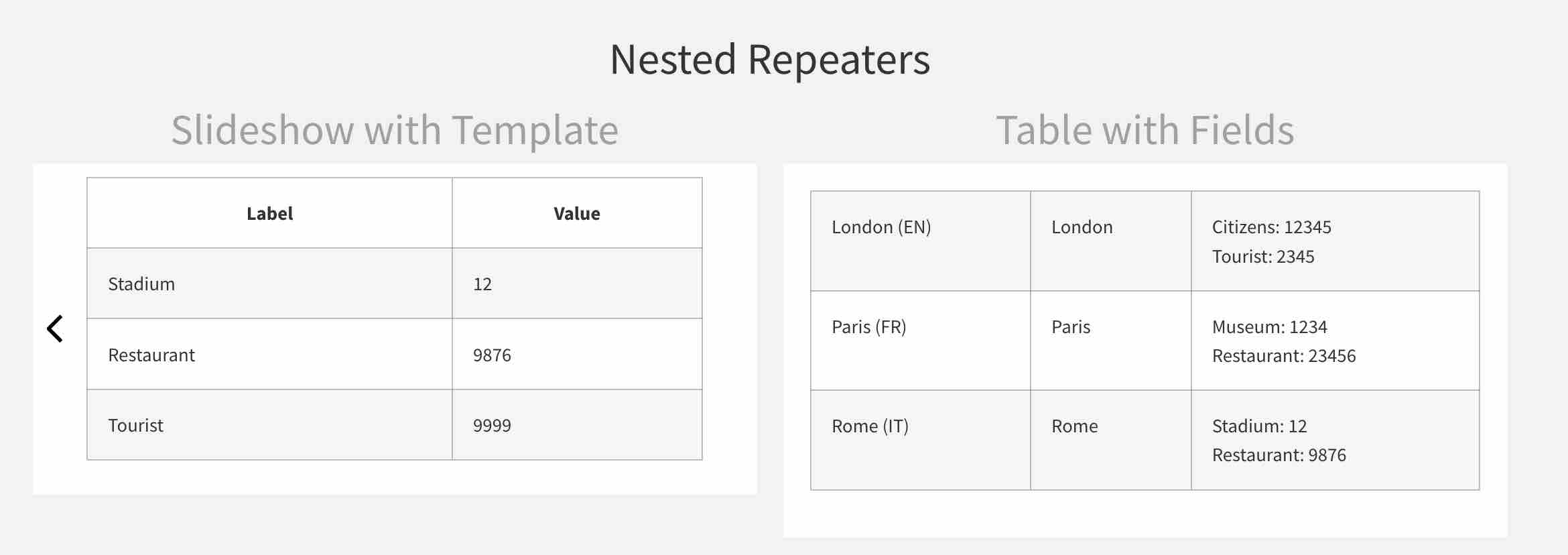
Some additional notable features
To conclude this presentation of Dynamic.ooo’s features, here are some other widgets worth checking out:
- “Dynamic Google Maps” (or OpenStreetMap), to design an interactive map with dynamic markers, modal windows related to an address, etc.
- “PDF Button” is a widget that allows you to save a part of a page or an entire page (content + design) in PDF format.
- “Add to favorites” allows your visitors to save their favorite articles and pages.
- “Copy/Paste Across Sites” allows you to copy the content of a page designed with Elementor (widgets, columns, sections, containers, etc.) and paste it on another Elementor page accessible on another domain name.
- Design related widgets, with those allowing you to add SVG effects to your content (distortion, morphing, blob, etc.), or 3D effects with WebGL. Among other creative widgets, you might also consider “Cursor Tracker,” which adds an element at the level of the mouse cursor and indicates the scroll level of the page.
Want to jump in and start using Dynamic Content for Elementor? Find out about the different licenses just below.
How much does this plugin cost?
Dynamic Content for Elementor is a premium plugin that offers two types of payment:
- Annual payment, with 3 licenses available at the following rates: €59/year for one site (about $62), €119/year for three sites (about $125), and €199/year for use on 1,000 sites (about $211).
- One-time payment to benefit from the plugin for life. In this case, there are two offers: €189 for one site (about $200) or €499 for 1,000 sites (about $530).
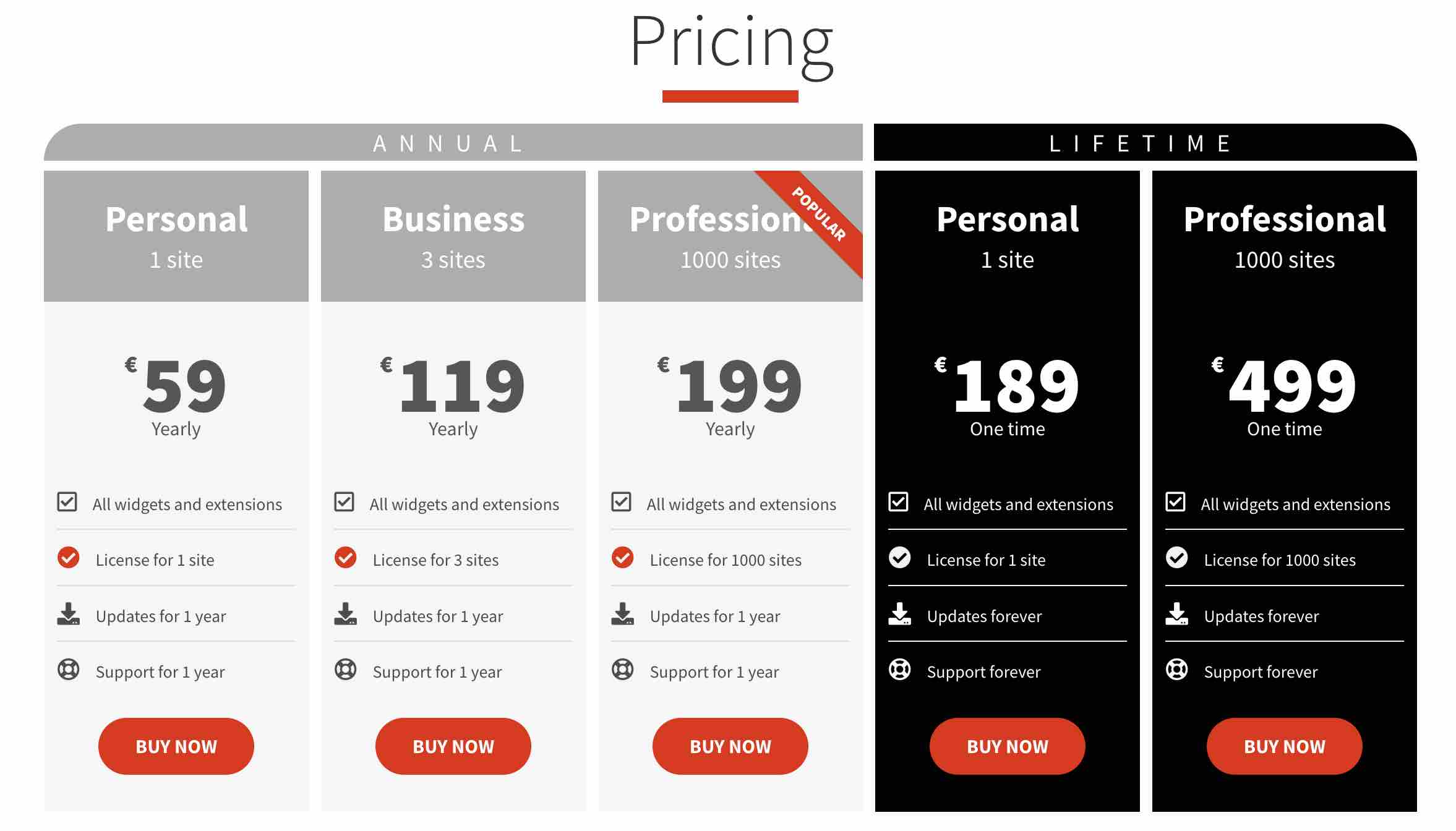
Each license includes all widgets and modules offered by Dynamic Content for Elementor, support, and updates.
The license you choose depends on the number of sites you intend to use Dynamic.ooo on.
Obviously, a lifetime license represents a higher initial investment. However, it’s worth it if you plan to use the plugin for at least 3 years.
Finally, note that a 30-day money back guarantee is offered. This allows you to test this WordPress plugin for a month, risk-free.
Our final opinion on Dynamic.ooo – Dynamic Content for Elementor
To finish this article, let’s take stock of the plugin’s strengths and limitations, as well as our opinion after its test.
Advantages of Dynamic.ooo – Dynamic Content for Elementor
- An easy-to-use plugin, since it integrates into the Elementor editor. As with the page builder, you just need to drag and drop to add the widgets of your choice.
- The fact that Dynamic.ooo does not require any code knowledge to use.
- The wide range of functionalities offered (over 140 widgets/modules to date).
- The option to activate/deactivate the widgets and modules you need in one click.
- The numerous widgets that allow you to add dynamic content.
- Integration of Dynamic Content for Elementor with multiple plugins, including WooCommerce and Advanced Custom Fields.
- A plugin available for both free Elementor users and Elementor Pro users.
- A plugin that is frequently updated and improved.
Disadvantages of the plugin
- As there are a lot of widgets and modules, you will have to take some time to get familiar with the options and their usefulness.
- Some widgets are still pretty technical, not in their implementation but rather in the options they offer. A beginner can quickly find himself a bit lost in the middle of all this.
- The plugin can slow down the loading speed of your pages and the Elementor editor: make sure you only activate the features you need!
Dynamic Content for Elementor: for whom?
As its name suggests, Dynamic Content for Elementor is primarily intended for users of the Elementor page builder.
Even if we find widgets that are quite similar to those already present on Elementor Pro (affiliate link), Dynamic.ooo also offers exclusive features (e.g. ACF widgets and dynamic content) that are very useful.
As this plugin does not require any knowledge of code, it can suit any type of user, from beginner to expert.
However, a novice will not necessarily need to use widgets to add dynamic content or ACF fields.
In this sense, Dynamic.ooo seems to me to be more for intermediate or advanced users (developers and web designers).
To know with which version of Elementor (free or Pro) is better to use with it, analyze your needs beforehand and determine the product (Elementor or Dynamic.ooo) that has the features you need. Some of them may be already present in Elementor, without you knowing it.
To help you, check out this list of the features of Dynamic Content for Elementor that are compatible with the free version of Elementor.
Do you use this plugin for Elementor? If so, what’s your opinion on it? Leave a comment and let me know your thoughts.

Receive the next posts for free and access exclusive resources. More than 20,000 people have done it, why not you?







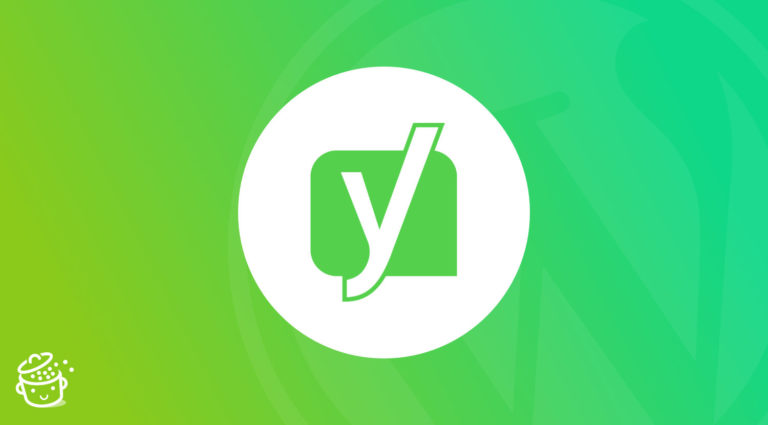

I do not recommend it. Since I incorporated it into an Ecommerce site, my client reported 500 crashes and errors. We have a site that is frequented by about 50 users per hour, and the response time was drastically affected after integrating this plugin.
I won’t deny it, it’s very useful, it allows to make conditions based on if the user is logged in, if there is an ACF field present etc. It saves you a lot of “Snippets”.
But the performance is simply ruined.
Just by activating the “Users&Roles” trigger to hide some buttons from guest users, the site performance goes through the roof.
I have the latest version 2.8.12
Loader.io test, 100 users entering the home page (where the buttons are) in 1 minute.
Screenshot with Dynamic Content plugin activated:
https://imgur.com/zFOmkun
(20.000 MS and many users queued to view the site!)
Loader.io test, 100 users, but with the plugin disabled:
https://imgur.com/a/68vLC4P
(1,000MS)
I’ll test again with snippets and if I can I’ll bring you the performance. Check twice before putting this plugin on a production site.
Translated with http://www.DeepL.com/Translator (free version)